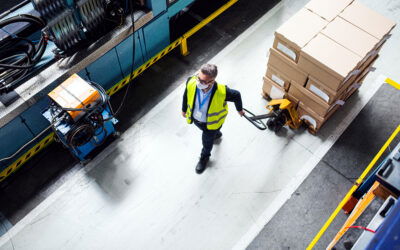The question of whether OEE (Overall Equipment Effectiveness) can exceed 100% intrigues many industrial managers. OEE is a key indicator for measuring equipment efficiency in a plant. It combines availability, performance and quality to give a comprehensive overview of the operational efficiency of a production line. However, many managers wonder whether a score above 100% is achievable when lines are operating at maximum capacity.
An OEE of over 100% might seem impossible, since it would mean that equipment is operating beyond its theoretical maximum capacity. In reality, such a scenario often raises questions about the accuracy of the data used for calculation. Real-time monitoring via solutions such as
For example, a beverage production line may experience seasonal fluctuations in demand, prompting production to be maximized. However, an OEE score above 100% could be the result of misconfigured measurement systems or overestimated equipment capabilities. Intelligent use of real-time monitoring tools, such as TeepTrak solutions, helps to correct these anomalies by providing greater visibility over every detail of the production process.
The implications of an OEE in excess of 100% can also affect quality. If production speed is pushed to extreme levels, this can lead to a drop in final product quality. To avoid this, continuous improvement is crucial. By optimizing every aspect of production, managers can maintain high performance levels without compromising quality. This balance is often achieved through a robust digital infrastructure that supports Lean Manufacturing initiatives.
Concluding whether OEE can be higher than 100% is often a question of context and data accuracy. Using tools such as TeepTrak for accurate monitoring enables a data-driven approach essential for continuous performance improvement. Industrial decision-makers need to focus on process optimization rather than on numbers that may not reflect operational reality. By doing so, they can truly boost overall equipment efficiency.
FAQ
Question 1: How is OEE calculated in a plant?
OEE (Overall Equipment Effectiveness) is calculated from three components: availability, performance and quality. These elements give a clear picture of equipment efficiency.
Question 2: What are the common errors in calculating OEE?
Common errors include poor estimation of downtime, speed losses, and quality defects. Using tools like TeepTrak helps to correct them.
Question 3: Why is an OEE of over 100% unrealistic?
An OEE above 100% suggests production in excess of maximum theoretical capacity. This usually indicates errors in monitoring or data calculation.





0 Comments